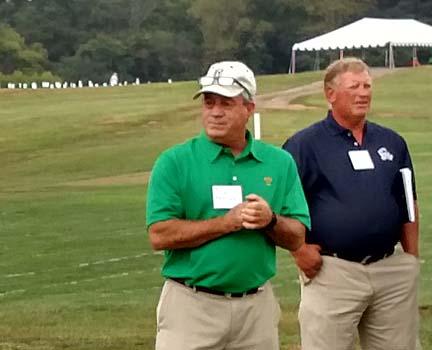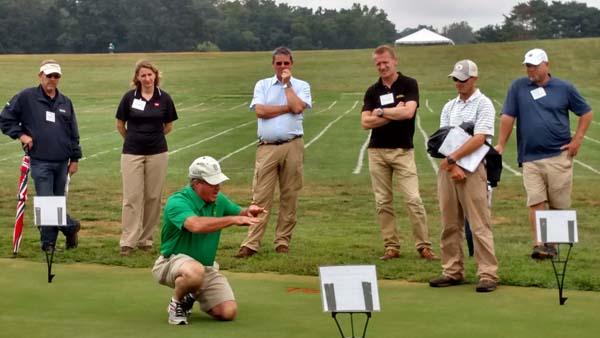
During his 30 years as a superintendent, Jim Thomas has managed just about every type of grass imaginable. Bentgrass, Bermuda, ultradwarfs you name it; he's seen it. As the host superintendent of a PGA Tour event for the past 10 of those years, he also has picked up a trick or two about keeping turf healthy during challenging times.
"I've done 328 Bermuda, Crenshaw and Penncross bentgrass, and now I've got about 10 years of Champion (ultradwarf Bermuda)," Thomas said during an ultradwarf management seminar at the recent University of Tennessee turf research field day. "I've pretty well made mistakes on all of them."
Thomas, who is director of golf course operations at TPC Southwind in Memphis, Tennessee, home of the PGA Tour's FedEx St. Jude Classic, he also has done a lot of things right.
Through cultural practices that include a lot of verticutting, topdressing and use of rollers and groomers, Thomas is able to produce consistently firm, fast and healthy greens without ridiculously low mowing heights.
His program includes verticutting weekly in two directions at one-eighth inch and topdressing every other week. He also rolls four times each week and double-cuts, first using a walk-behind unit with a cutting height of 0.125-0.130, followed by a triplex at 0.100-0.105. Half the triplex units are outfitted with brushes out front, the other half with groomers. On weeks when he topdresses, Thomas waits four-five days before grooming and brushing, so the sand can work into the canopy. Once each summer he introduces a more intense verticutting, using a scarifier at depths of three-eighths inch to one-half inch in three to five directions, followed by relieving compacted soils with the DryJect system and core aerification.
Thomas also goes light on his fertility, using 3-4 pounds of nitrogen per 1,000 per year. That program includes granular applications in the spring to induce growth and again in the fall to promote root growth. Throughout the summer, he applies a foliar at a rate of one-tenth of a pound every other week to retain a dark green color.
"I've gone from one extreme to the other," he said. "I think the leaner the better."

It might sound like an intensive program, but the dense nature of Champion makes regular cultural practices necessary when producing healthy greens that consistently roll between 11 and 12 on the Stimpmeter.
"You have to find time to do it regularly," he said. If you push Bermuda up against the grain, take a pocketknife and look at it. It's layered on top of each other three to five layers. From a verticutting standpoint, that is what we're trying to do, cut those out, because that is what forms that and makes the green puffy.
"When the turf is thin, just on the verge of seeing soil, that is the best green you can have."
Thomas' work falls under regular scrutiny each year during the St. Jude, with TV analysts constantly broaching the subject of grooming. Brushing and grooming fluffs the turf prior to mowing. Along with verticutting those practices also help manage organic matter.
"They'll say the greens are rolling at 12.5. But that was in the morning after they were double-cut and rolled," he said. "Where are you at 1:30? That's what's important."
Thomas' program usually produces greens that by mid-afternoon still are rolling at 11.5.
"If I'm at 11.5 at 1:30 in the afternoon, that's really, really good," Thomas said. "They'll still think it's 12.5."

